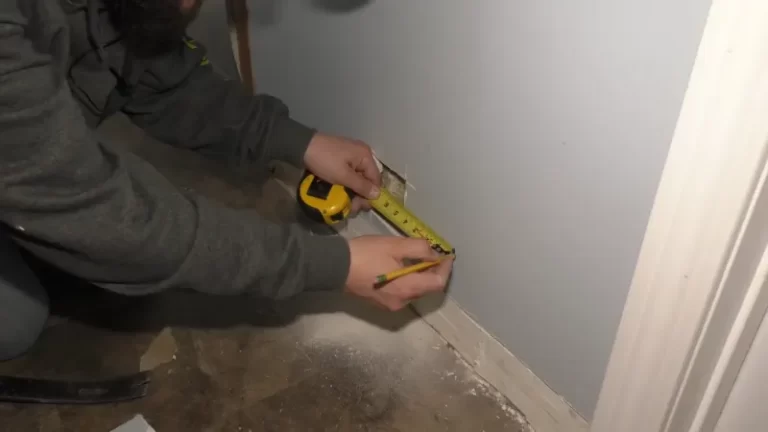2091 vs 2097: Which P100 Filter Is Your Ultimate Shield?
Choosing the right respiratory protection can feel like navigating a minefield of confusing codes and numbers. You know you need serious protection, but the subtle differences between models like the 3M 2091 and 2097 particulate filters can be perplexing. Making the wrong choice isn’t just a matter of wasted money; it could mean exposing yourself to harmful airborne contaminants.
The core problem lies in understanding what separates these two seemingly identical pink P100 filters. One is designed for pure particulate blocking, while the other offers an additional, crucial layer of defense. This guide will demystify the 2091 vs 2097 debate, providing clear, actionable advice to help you select the ultimate shield for your specific tasks.
You'll Learn About
Decoding P100: The Gold Standard of Particulate Protection
Before comparing the 2091 and 2097, it’s essential to understand what the “P100” rating signifies. This rating is provided by the National Institute for Occupational Safety and Health (NIOSH), a U.S. federal agency responsible for regulating respirator filters. The letter and number combination tells you everything about a filter’s capabilities.
The letter indicates the filter’s resistance to oils. “N” series filters are not resistant to oil, “R” are somewhat resistant, and “P” stands for oil-proof, offering the highest level of protection against both oil-based and non-oil-based particulates. The number “100” means the filter has an exceptional efficiency, blocking at least 99.97% of airborne particles. This makes P100 filters the highest level of personal respiratory protection available for particulates.
The 3M 2091: The Pure Particulate Specialist
The 3M 2091 P100 filter is a workhorse designed for one primary mission: to provide outstanding protection against a wide range of solid and liquid particulates. It excels in environments where airborne dust, mists, and fumes are the main concern, but where gases and vapors are not present at harmful levels.
Made with 3M’s Advanced Electret Media (AEM), the 2091 provides a lightweight and easy-breathing experience without using fiberglass components. Its versatility makes it a go-to choice for numerous applications, reducing inventory needs for many professionals. It’s built to be durable, with flame and water-resistant properties.
Common Applications for the 3M 2091:
- Asbestos and Lead Abatement: The P100 rating is critical for safely handling these hazardous materials.
- Sanding, Grinding, and Woodworking: It effectively captures fine dust particles generated during these tasks.
- Pharmaceutical Manufacturing: Protects against fine powders and compounds.
- General Construction and Demolition: An essential piece of PPE for dusty worksites.
The 3M 2097: Particulate Protection with an Added Defense
The 3M 2097 P100 filter offers the exact same 99.97% particulate filtration efficiency as the 2091. The critical difference lies in an additional feature: a layer of activated carbon. This carbon layer is specifically designed to provide relief from nuisance levels of organic vapors and acid gases.
It is crucial to understand what “nuisance level” means. This refers to concentrations of vapors that are not exceeding the OSHA Permissible Exposure Limit (PEL) or other applicable exposure limits. The 2097 is not a vapor-proof cartridge; it is designed to reduce annoying or unpleasant odors that can cause discomfort, not to protect against harmful concentrations of gases or vapors. For some tasks, like welding, it also offers protection against ozone up to 10 times the OSHA PEL.

Common Applications for the 3M 2097:
- Welding, Brazing, and Soldering: Ideal for filtering metal fumes and providing relief from ozone and nuisance odors.
- Mold Remediation: While a P100 filter is standard, the 2097 helps mitigate the musty odors associated with mold.
- Waste Sorting and Composting: Reduces exposure to unpleasant organic odors.
- Chemical Processing (for particulates): Useful in environments with low-level, non-hazardous background odors.
Head-to-Head Comparison: 2091 vs 2097
To make the choice crystal clear, this table breaks down the key features of each filter side-by-side. This quick reference guide highlights the fundamental differences in their intended use cases and protective capabilities.
| Feature | 3M 2091 P100 Filter | 3M 2097 P100 Filter |
|---|---|---|
| NIOSH Rating | P100 (99.97% filtration) | P100 (99.97% filtration) |
| Primary Protection | Solid and liquid particulates (oil and non-oil based) | Solid and liquid particulates (oil and non-oil based) |
| Additional Protection | None | Nuisance level organic vapor and acid gas relief; Ozone protection |
| Key Technology | Advanced Electret Media | Advanced Electret Media with an integrated carbon layer |
| Best For | Asbestos, lead, sanding, grinding, demolition | Welding, soldering, mold remediation, environments with odors |
| Cost | Generally less expensive | Slightly more expensive due to the carbon layer |
The Deciding Factor: How to Choose the Right Filter for Your Task
The choice between the 2091 and 2097 ultimately comes down to a single question: Will you be exposed to annoying or unpleasant odors? If the answer is no, the 2091 is the more economical and perfectly sufficient choice. If the answer is yes, the added comfort and odor relief from the 2097 is well worth the minor price increase.
Scenario-Based Recommendations
To further guide your decision, here are specific scenarios and the recommended filter for each one.
For the Woodworker or Drywall Installer: Choose the 2091
When you’re sanding wood, cutting drywall, or working with most non-volatile materials, your primary hazard is airborne dust. The 2091 provides complete P100 protection against these particulates without the unnecessary cost of a carbon layer.
For the Welder or Metalworker: Choose the 2097
Welding and soldering produce harmful metal fumes (a particulate) but also generate ozone gas and other nuisance-level vapors. The 2097 is specifically recommended for these tasks as it tackles both the particulate fume and the irritating odors and ozone, providing a much more comfortable working experience.
For Asbestos or Lead Removal: Choose the 2091
In hazardous material abatement, the sole focus is on capturing every single dangerous particle. Odors are not the primary concern. The 3M 2091 is the standard for this work, offering the required P100 protection. Professionals may also work with older materials, and understanding the history of building products, such as in balsam wool insulation removal, can provide important context for potential hazards.
For Mold Remediation: Choose the 2097
While the 2091 will effectively filter mold spores, the 2097 is often the preferred choice. The carbon layer helps to reduce the strong, musty smell that is characteristic of mold growth, making a difficult job more tolerable for the worker.
Critical Safety Information You Can’t Ignore
Selecting the right filter is only part of the equation for ensuring your safety. Proper use, maintenance, and understanding the limitations of your equipment are equally important. Without this knowledge, even the best filter can fail to protect you.
Respirator Compatibility and Fit
Both the 2091 and 2097 filters are designed with a bayonet-style connection that is compatible with a wide range of 3M reusable respirators. This includes the popular 3M 6000, 6500, 7500, and FF-400 series half and full facepieces. However, a filter is useless if the respirator doesn’t form a perfect seal with your face. Always perform a user seal check every time you put on the respirator, and ensure you have undergone a formal fit test for any occupational use.
When to Replace Your Filters
There is no fixed schedule for replacing particulate filters; their lifespan depends entirely on the environment and duration of use. You must replace your filters immediately if you notice any of the following signs:
- Breathing becomes difficult: This indicates the filter is clogged with particulates.
- The filter is damaged or soiled: A compromised filter cannot provide full protection.
- (For the 2097) You begin to smell or taste contaminants: This means the carbon layer is saturated and can no longer absorb odors.
- Occupational Guidelines: For environments containing only oil aerosols, 3M recommends replacing the filters after 40 hours of use or 30 days, whichever comes first.
Understanding the “Nuisance Level” Misconception
It’s vital to reinforce the meaning of “nuisance level relief.” This feature is for comfort, not for safety against high concentrations of chemicals. Neither the 2091 nor the 2097 will protect you from hazardous levels of organic vapors or acid gases, such as those found in paint spraying, pesticide application, or chemical manufacturing. For those applications, you must use a dedicated respirator cartridge designed for specific chemicals, like the 3M 6000 series cartridges.
Advanced Insights: Maximizing Filter Performance and Value
Beyond the basic comparison, there are deeper considerations that can enhance your safety and provide better value. Understanding the subtle dynamics of filter use can elevate your respiratory protection strategy from basic compliance to expert-level safety.
The Impact of Humidity on the 2097
The activated carbon layer in the 2097 filter works by adsorption, where vapor molecules stick to the surface of the carbon. High humidity can interfere with this process, as water molecules will compete for space on the carbon’s surface. In very humid environments, the odor-reducing lifespan of a 2097 filter may be noticeably shorter, even if its particulate-filtering ability remains unchanged. Storing your respirator and filters in a clean, dry place is essential for maximizing their effectiveness.
Cost vs. Versatility: A Strategic Approach
For a hobbyist or a professional who performs a wide variety of tasks, the 3M 2097 can be a more strategic and cost-effective choice in the long run. While slightly more expensive per pair, having a filter that can handle dust from a sanding project one day and welding fumes the next reduces the need to stock multiple types of filters. This simplifies inventory and ensures you always have a capable filter on hand. Conversely, for a specialist who only performs tasks like asbestos abatement, the 2091 is the clear economical winner.
Conclusion: Making the Confident Choice for Your Health
The debate between the 3M 2091 and 2097 filters is not about which one is “better,” but which one is precisely engineered for your specific environment. Both provide the highest level of particulate protection available with their P100 rating. The choice simplifies to this: the 2091 is your specialist for pure particulate hazards, while the 2097 is your specialist for particulates combined with nuisance-level odors and ozone.
By analyzing your tasks, understanding the limitations of each filter, and adhering to strict replacement and fit-testing protocols, you can move beyond confusion. You can confidently select the right shield, ensuring that every breath you take on the job is a safe one.

